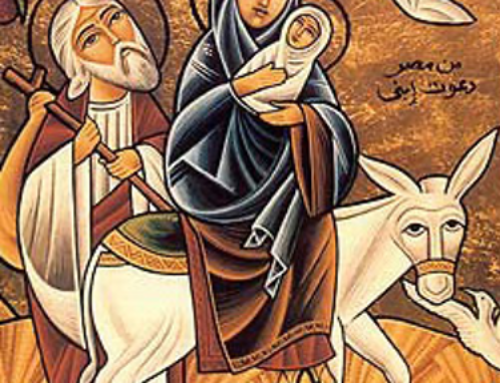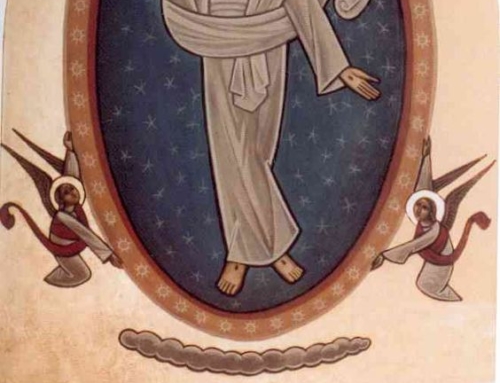
Learn the historical and theological background for this hymn, and its personal and liturgical significance for all of us.
Evlogimenos:
- the signature hymn of Palm Sunday
- as all signature hymns, they are chanted after the Synexarion and before the Trisagion (Holy God, Holy Mighty, Holy Immortal)
- they are known as ‘entrance hymns’ (Gr. Eisodhikon) – hymns that usher in the Lord Christ so that we may hear the Gospel, His word
- all signature hymns talk directy or indirectly about an aspect of the Lord’s character and identity
-
-
- Megalou – Great Fast – the Lord the Archpriest
- Khrictoc Anecti – Resurrection – the Lord God over the earth
- Khrictoc Analempcic – Ascension – the Lord God King of heaven
- Ni Khora – Cana of Galilee – Lord of Miracles
- all signature hymns then speak of the Lord’s Character and then affirms to us that He is God, and that He is firmly in the Trinity
-
-
Theology
This hymn celebrates
- a historical event – we’re reliving the actual entrance of Christ into Jerusalem, thus kicking off Passion Week
- a liturgical event – prelude to the reading of the Gospel – receiving the written Word before we later receive the Word in His Body and Blood
- a personal event – harking Christ’s entrance into us as He comes into the deepest parts of us
- a soteirological event – an event to do with our salvation – a very important event and act of Christ’s saving work with humanity and all creation. Although we commemorate and always speak of certain acts of Christ as being the most crucial to our salvation, it is all one single unified work in the end. His Incarnation, His ministry, His passion, His resurrection, and ascension – all of those great events directly bring about our salvation
History
This hymn was sung by the chanters and deacons as they went up to the bishop’s residence (the ‘cathedra’, lit. seat of the bishop – that’s how we got the word cathedral). They would escort him singing this powerful chant into the church, of course helping us associate the office of the bishop to the priestly office of Christ.
Language and Notes on Use
This hymn is entirely in the Greek language, except the final two verses which are in Coptic. A general rule arises in Coptic hymnography (the actual text of the hymns) that where you find a few Coptic verses in a predominantly Greek text, you should know that the Coptic was added much later and this was probably done to ‘Coptify’ the text – lest we be caught copying from the Eastern Orthodox!
This hymn is writtten in such a way that it is to be chanted antiphonically – meaning the two choruses of the church to sing one part of the verse each. So one chorus starts off by saying Wcanna tou `uiw Dauid (Hosanna to the Son of David!) and the chorus replies back saying Palin tou `uiw Dauid – Again, to the Son of David!
And from the accounts of the Gospel writers, we know that people behind Christ and in front of them were shouting this hymn. It is then fitting and appropriate that we chant this hymn with the same level of ferocious power, antiphonically, when Palm Sunday comes.
Scriptural source
Blessed who comes in the Name of the Lord … (Ps. 118:26)
Hosanna to the Son of David … Hosanna in the highest! (Matthew 21:9)
Blessed is the King who comes in the name of the Lord! (John 12:13)
Contemplation and Exposition
This is one event which all the Gospels speak of. All of them report on this great and awesome entrance of God into Jerusalem. According to the rabbinical teachings, Psalm 118 is the psalm that will be said when the Messiah comes for the Jews. Therefore when the people sang this hymn they were making quite a strong statement and proclaiming Jesus as the Messiah! That is why the Pharisees became so angry when the people started crying out the Psalm when the Lord came into the city; how can they be saying this precious psalm to a blasphemer!
Therefore when we sing this hymn we are openly proclaiming Jesus as our Messiah and King, welcoming Him into out hearts to reign as king. So we should realise the seriousness of this hymn and not take it lightly.
One of the sadder aspects of Palm Sunday is that the same people who were crying out for their Messiah were the same ones who later cried out for his crucifixion to happen immediately. We pray that when we chant this hymn on Palm Sunday, we mean it and we later don’t betray our words and our Messiah by asking the world to crucify him again and again.
In the Old Testament, when the kings would return to Jerusalem and their cities victorious in battle, they would always return on donkeys, not horses. (William Barclay “Christ Crucified”)Donkeys then became the sign of victory in war.
In the fulfillment of Zech. 9:9 and the OT witnesses, our Lord entered Jerusalem also on a donkey. St. Cyril of Alexandria illuminates this passage further by saying Christ came in riding on the foal of a donkey, to show His fulfillment of the Old Testament (donkey) and now the child of that donkey: the foal, here which is a symbol of the New Testament and the new Israel of God – the Church:
For when a great multitude were escorting Him like a body-guard and shouting His praises, with the most perfect self-restraint He seated Himself upon an ass, teaching us not to be lifted up by praises, and omitting no necessary thing. Matthew therefore related at greater length the circumstances concerning the ass; but John comes at once to the point of the affair that was most suited to the occasion, as it is his custom to do. And since, contrary to His usual habits, on this occasion only, Christ appears seated on an ass, we do not say that He so sat for the reason that it was a long distance to the city; for it was not more than fifteen furlongs off: nor because there was a multitude; for it is certain that on other occasions when He was found with a multitude He did not do this: but He does so, to indicate that He is about to make subject to Himself as a new people the unclean among the Gentiles, and to lead them up to the prerogative of righteousness, and to the Jerusalem above, of which the earthly is a type; into which this people being made clean shall enter with Christ, Who will be hymned by the guileless angels, of whom the babes are a type. And He calls the ass a colt, because the people of the Gentiles had been untrained to the piety which faith produces.
(St. Cyril of Alexandria’s Commentary on the Gospel of John)
Prof Michael Henein







